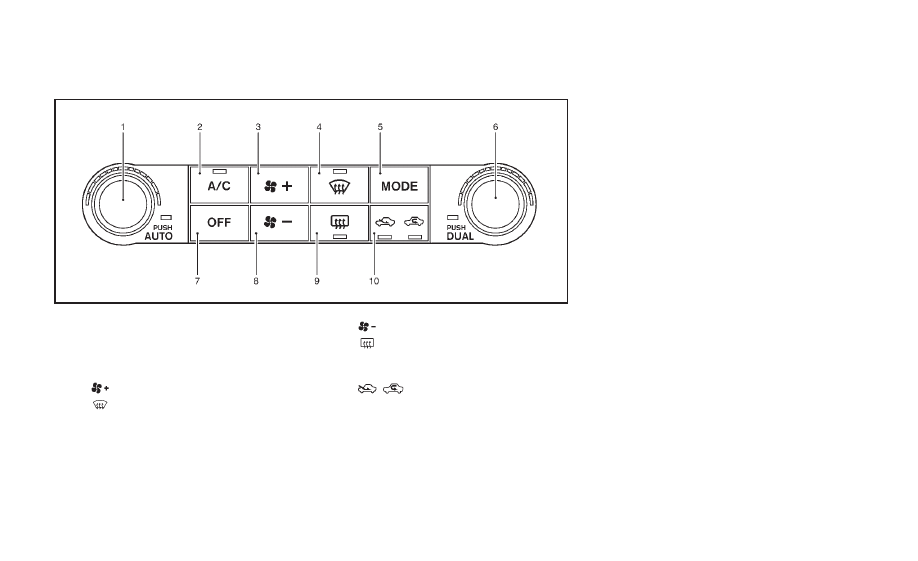Infiniti Q60 Coupe (2014 year). Manual - part 13

4-32
Monitor, climate, audio, phone and voice recognition systems
AUTOMATIC CLIMATE CONTROL (Type A)
SAA1527
Type A
1.
“AUTO” automatic climate control ON
button/Temperature control dial (dri-
ver side)
2.
“A/C” air conditioner ON/OFF button
3.
“
” fan speed increase button
4.
“
” front defroster button
5.
“MODE” manual air flow control but-
ton
6.
“DUAL” zone control ON/OFF button/
Temperature control dial (passenger
side)
7.
“OFF” button for climate control sys-
tem
8.
“
” fan speed decrease button
9.
“
” rear window defroster button
(See
“Rear window and outside mirror
defroster switch
” (P.2-34).)
10.
“
” intake air control button
Automatic operation
Cooling and/or dehumidified heating
(AUTO):
This mode may be used all year round. The
system works automatically to control the
inside temperature, air flow distribution
and fan speed after the preferred tempera-
ture is set manually.
1. Push the
“AUTO” button on. (The
indicator on the button will illuminate
and AUTO will be displayed.)
2. Turn the temperature control dial (dri-
ver side) to set the desired tempera-
ture.
.
The temperature can be set within
the following range.
— For U.S.: 60 to 908F (16 to 328C)
— For Canada: 64 to 908F (18 to
32
8C)
.
The temperature of the passenger
compartment will be maintained
automatically. Air flow distribution
and fan speed will also be controlled
automatically.
3. You can individually set driver and front
passenger side temperature using each
temperature control button. When the
“DUAL” button is pushed or the pas-
senger side temperature control button
is turned, the DUAL indicator will come
on. To turn off the passenger side
temperature control, push the
“DUAL”
button.
4. To turn off the climate control system,
push the
“OFF” button.